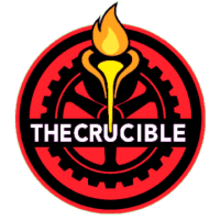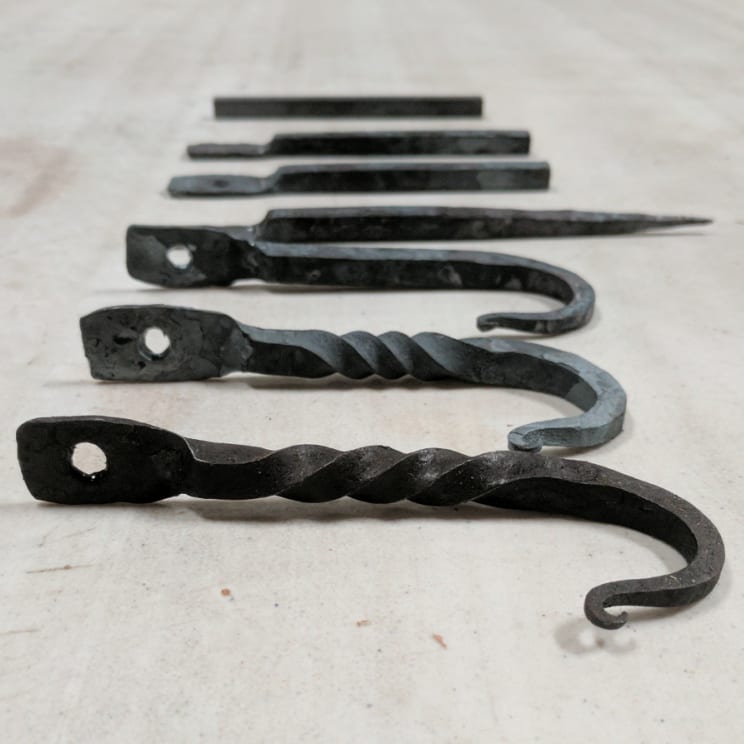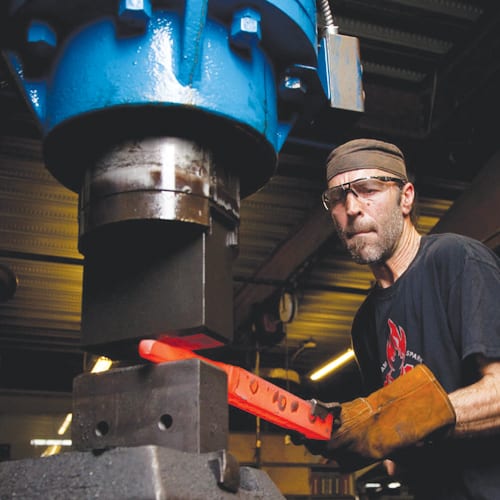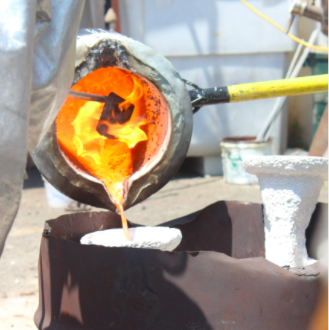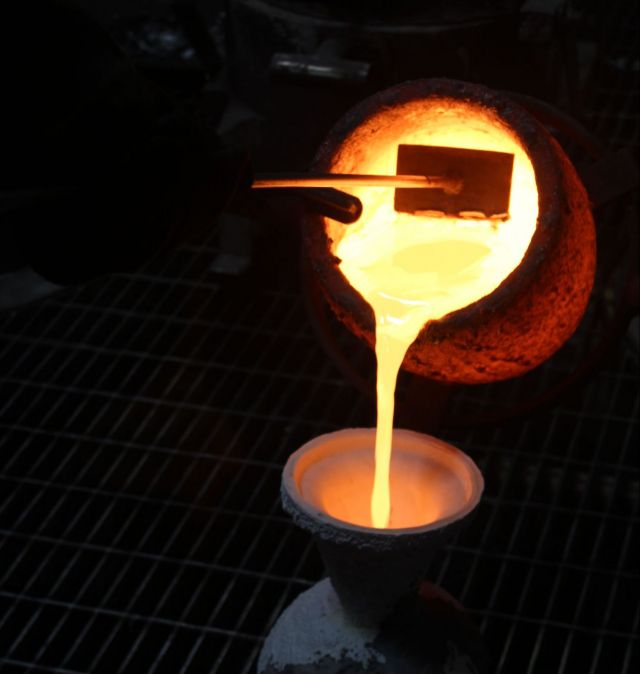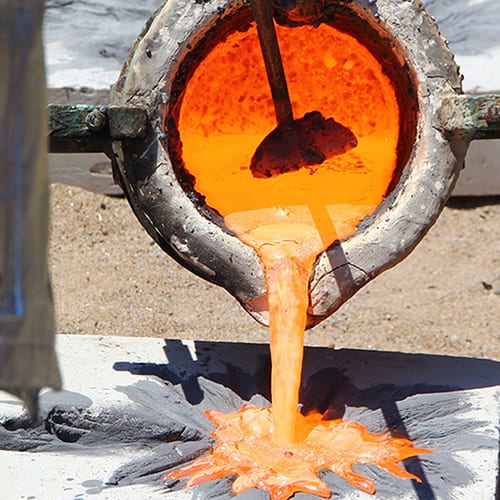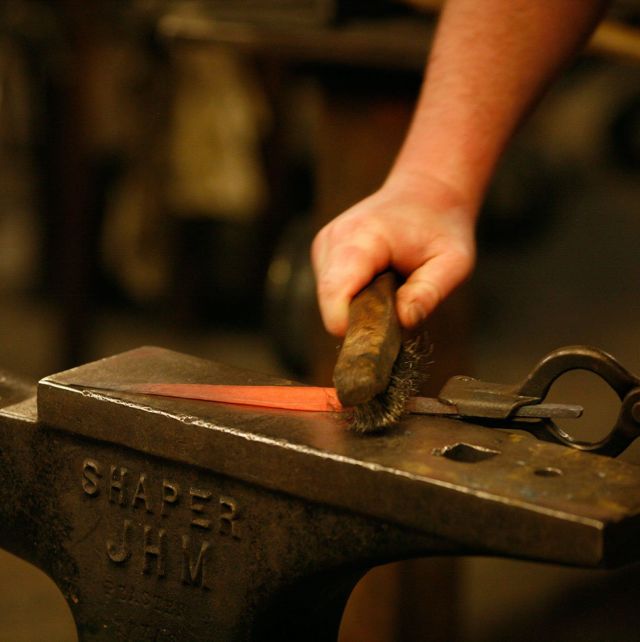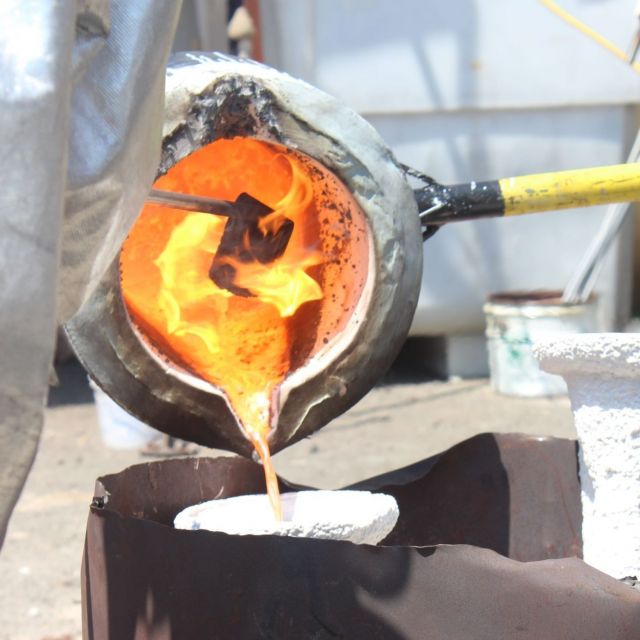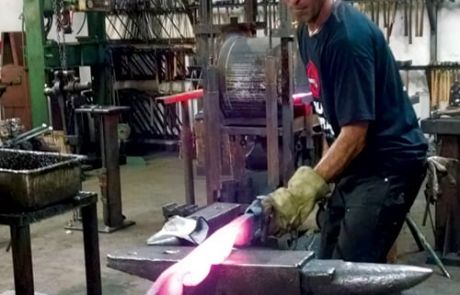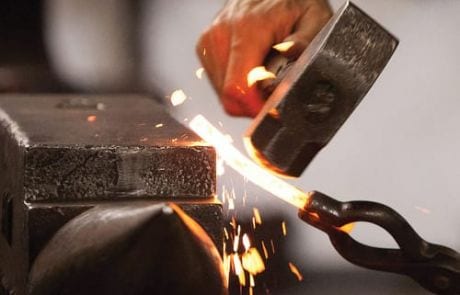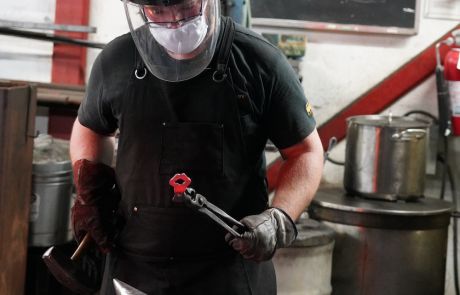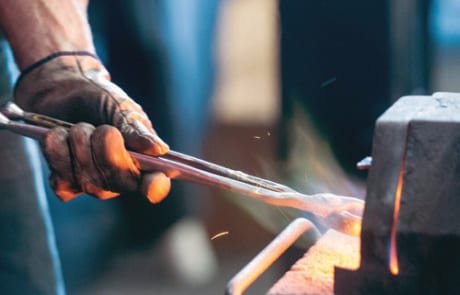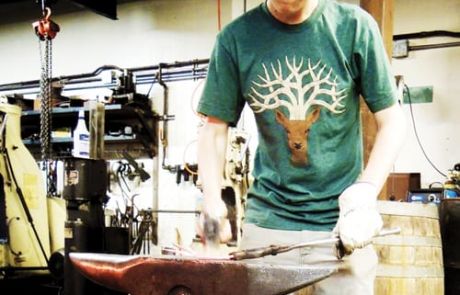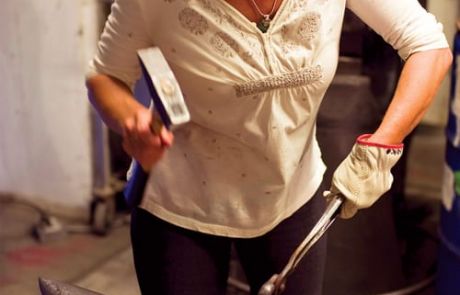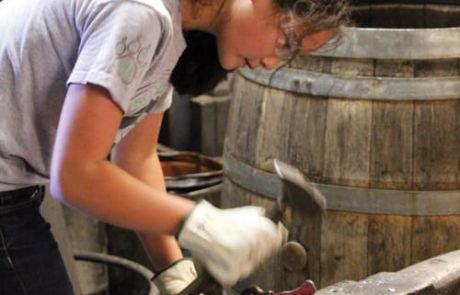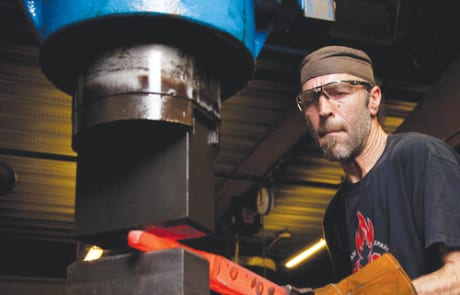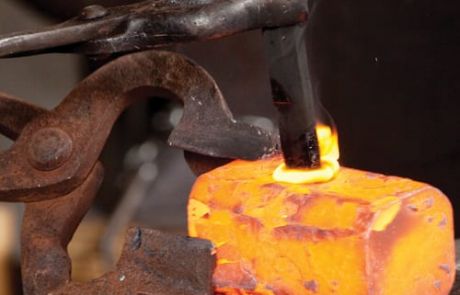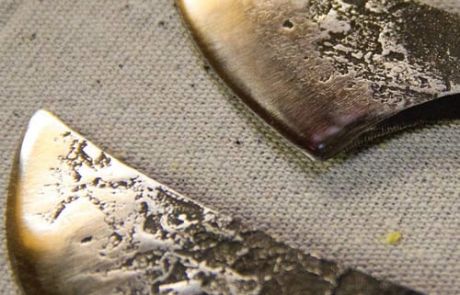Blacksmithing Projects: Forged Coat Hook in 6 Steps
Here, we will show you one of our favorite beginner blacksmithing projects—a forged coat hook. This forged iron hook is a classic design, and has a practical use while maintaining its ornamental appeal. As a plus, you end up with a tool that you can use in your own home. This is one of the first projects you will learn in The Crucible’s Blacksmithing I. Before you pick up the hammer, read how to fire a hook in the six steps below.
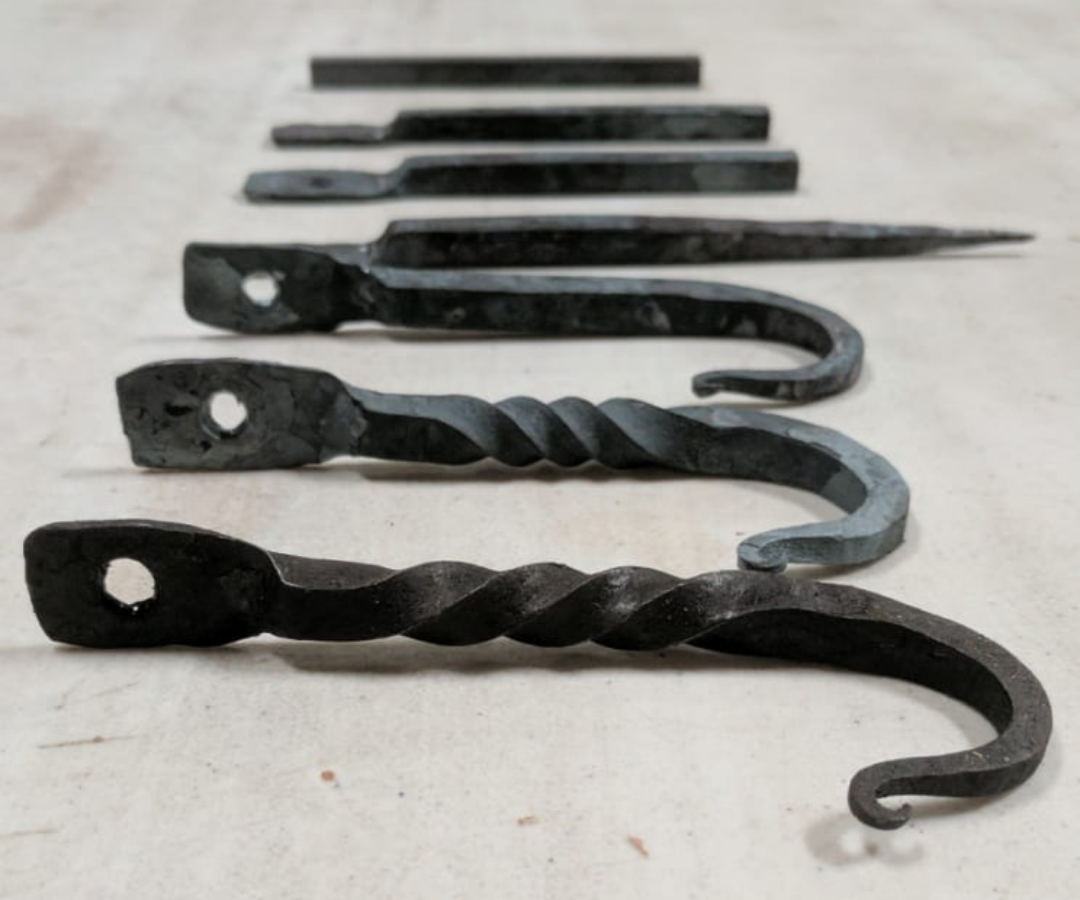
Beginning blacksmithing project: Coat hook
Tools required:
Step one: Create the shoulder
Use tongs to place your steel stock in the forge. Remove when orange. Place your piece one inch above the edge at a 10-degree downward angle. Strike at the edge of the anvil, creating a shoulder.
Bring your piece to level and strike to flatten. Work along the edges with consistent overlapping blows. Thin your piece to 3/16 inch. Remove your piece from the forge when orange and place it on the anvil with the faceplate shoulder down.
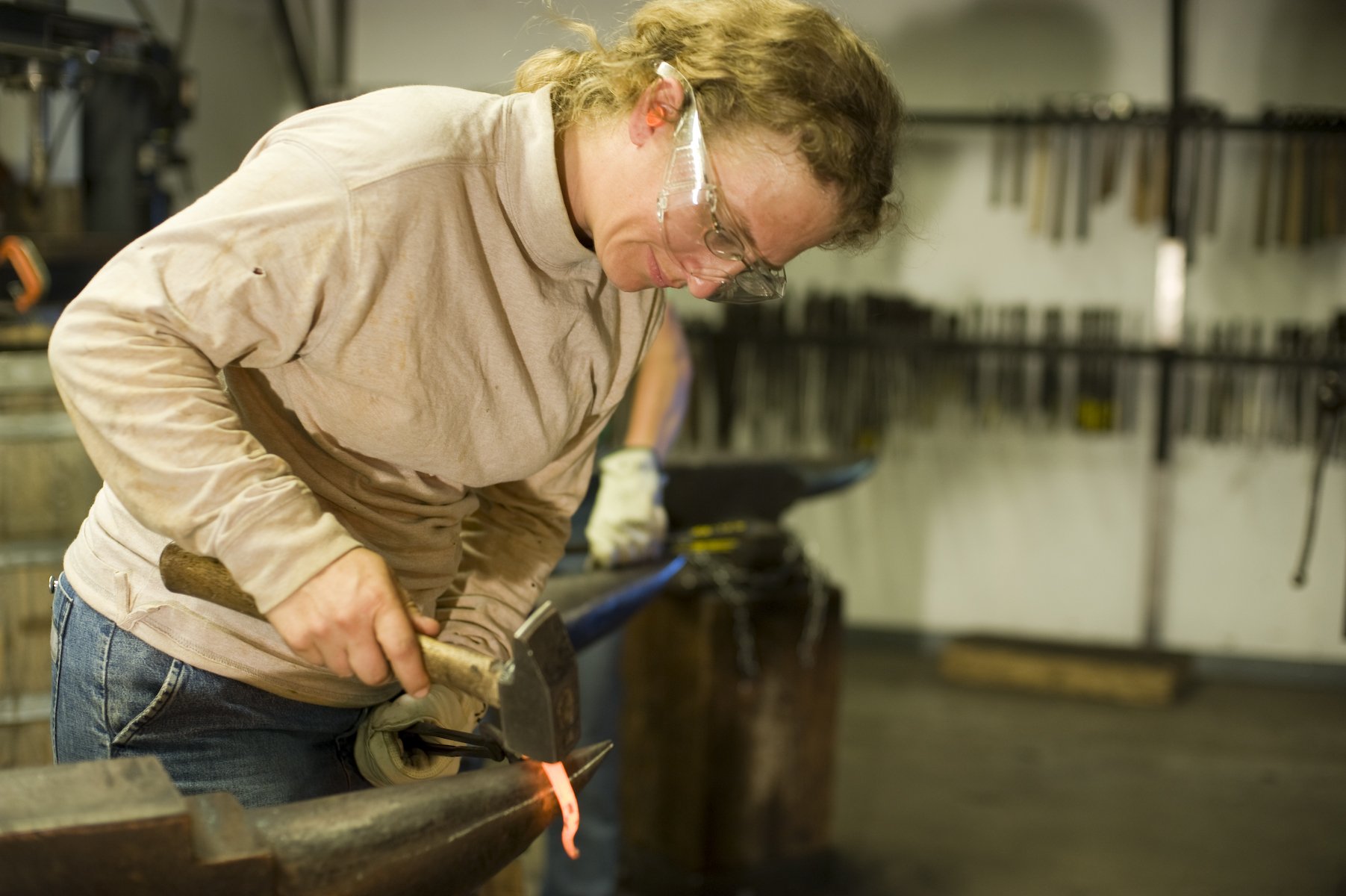
Step two: Punch a hole
Position punch strike and stop when you hit ¾ of the way through. Flip your piece over to punch the other side. Center it on the anvil, reposition punch, and strike until ¾ of the way through. Move to punch a hole on the plate and drive the punch into the hole, knocking out the plug. Cool the punch tool and return your piece to the forge, square end first.
Step three: Form the hook scroll
Place the piece at the edge of the anvil. Swing with angled blows to the edge of the bar, turning 90 degrees after every swing, tapering tip to 1/16 inch. Lie your piece flat, strike at the top of the taper, turning 90 degrees after every hit, then rotating 180 degrees every six to eight hits. Work toward the tongs with less and lighter blows until the taper is ⅜ of an inch to 1/16 of an inch over three inches.
Pull your piece from the forge shoulder up and place it on the anvil ½ inch over the edge, lightly striking past the edge until bent into an “L” shape. Rotate the tip upward and strike the tip towards you, forming a scroll. Quench the scroll.
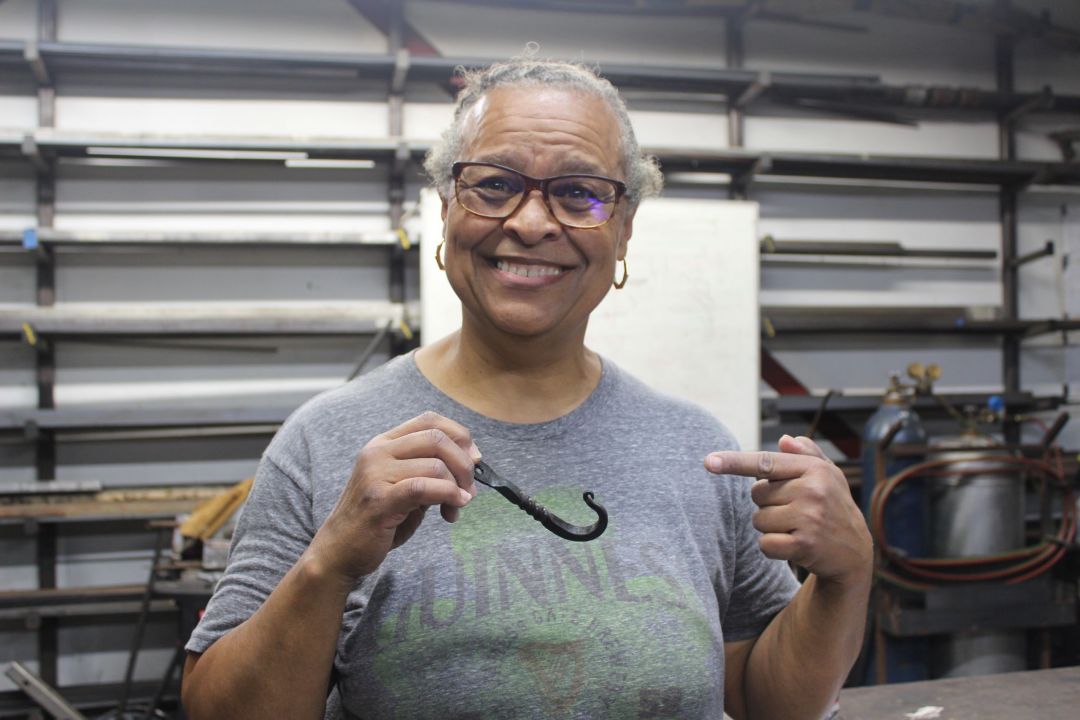
Step four: Make a small scroll the close the point
Place the piece on the anvil horn so that the scroll faces up, perpendicular to the sideline of the horn, with ½ inch hanging off the horn. Strike a small scroll bending the taper down. Feed out another ½ inch, striking scroll again, bending to an “L.”
Rotate 180 degrees and place on the anvil, with the small scroll facing up. Strike the small scroll toward you to close. Place the hook in the forge, backing plate on the forge table.
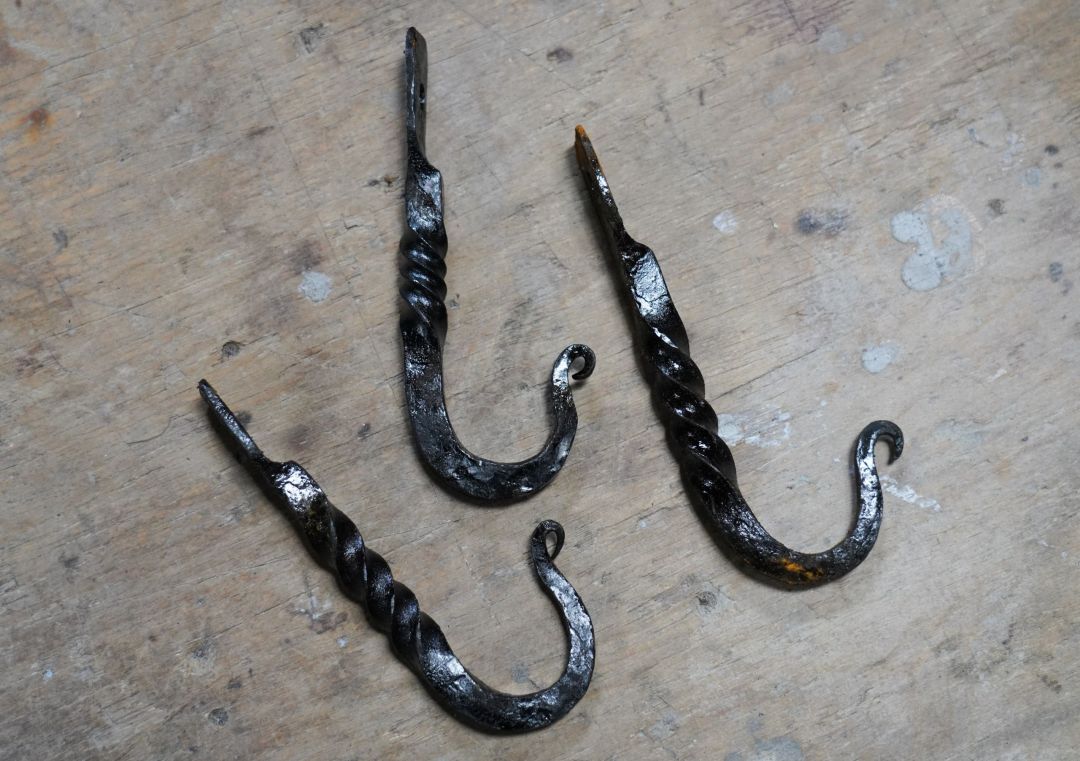
Step five: Twist the center
When your piece hits full heat, place it in the vise and hook it down with the small scroll at the top of the vise jaws. Tighten the vise. Place twisting wrench jaws perpendicular to the thickness of the backing plate. Pull up on the twisting wrench and twist one turn.
Step six: Finishing
Reheat your piece in the forge. Use a metal wire brush to scrape off the slag, the scale that forms from repeatedly heating steel. Directly after removing the slag, repeatedly dip your hook in a bucket of oil to protect it. Once completely covered, if necessary, hold your piece next to the forge until it turns a matte black.
Another incredible one of our favorite blacksmithing projects is done! Hang your forged hook on the wall at home!
